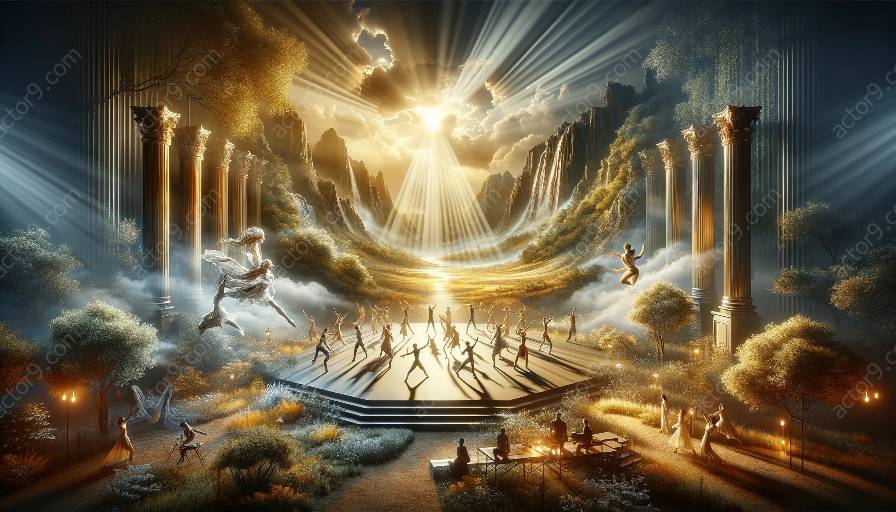Physical theatre, with its emphasis on the body and movement, relies heavily on the expressive power of lighting to convey symbolic meanings and metaphors. In this article, we will delve into the intricate relationship between lighting and physical theatre, exploring how lighting design can enhance the narrative, emotional impact, and visual aesthetics of a performance.
The Basics of Physical Theatre and the Role of Lighting
Physical theatre is a form of performance that emphasizes physical movement, expression, and storytelling through the body. Unlike traditional theatre, it often utilizes minimal dialogue and relies on the expressive potential of the human form. Lighting plays a crucial role in physical theatre, as it shapes the audience's perception of the performance space, accentuates the performers' movements, and establishes the mood and atmosphere of the narrative.
Conveying Symbolic Meanings and Metaphors through Lighting
Lighting in physical theatre can be used to convey symbolic meanings and metaphors by manipulating the quality, intensity, color, and direction of light. For example, the contrast between light and shadow can represent the internal struggle of a character, while the use of vibrant colors may evoke specific emotions or themes. Moreover, light can be choreographed to interact with the performers, creating dynamic visuals that embody abstract concepts or narratives.
Enhancing Emotional Impact and Visual Aesthetics
Effective lighting design in physical theatre has the power to enhance the emotional impact and visual aesthetics of a performance. By carefully orchestrating light and shadow, lighting designers can underscore key moments, reveal hidden layers of the narrative, and immerse the audience in the sensory experience of the production. Whether through subtle shifts in lighting to convey emotional nuances or bold, dramatic choices to punctuate pivotal scenes, lighting serves as an essential tool for shaping the audience's emotional and visual engagement.
The Collaborative Process of Lighting Design in Physical Theatre
Lighting design in physical theatre is a collaborative process that involves close coordination between lighting designers, directors, choreographers, and performers. It requires an interdisciplinary approach, where lighting designers work in tandem with the creative team to align the visual elements with the thematic, narrative, and emotional aspects of the performance. This collaborative synergy ensures that lighting serves as a seamless extension of the physical storytelling, enriching the audience's understanding and immersion in the theatrical experience.
Conclusion
Lighting plays a multifaceted role in physical theatre productions, serving as a potent means of conveying symbolic meanings, metaphors, emotional depth, and visual allure. Its ability to sculpt the performance space, interact with the performers, and evoke powerful imagery makes it an indispensable component of the physical theatre landscape. Understanding the dynamic interplay between lighting and physical theatre not only deepens our appreciation for the craft but also unveils the profound impact of illumination in shaping the realm of embodied storytelling.




































